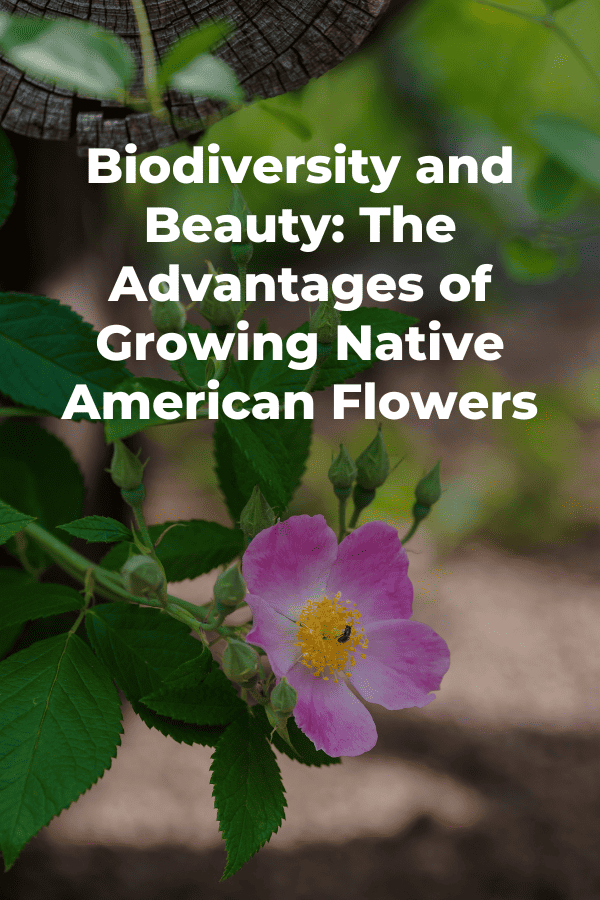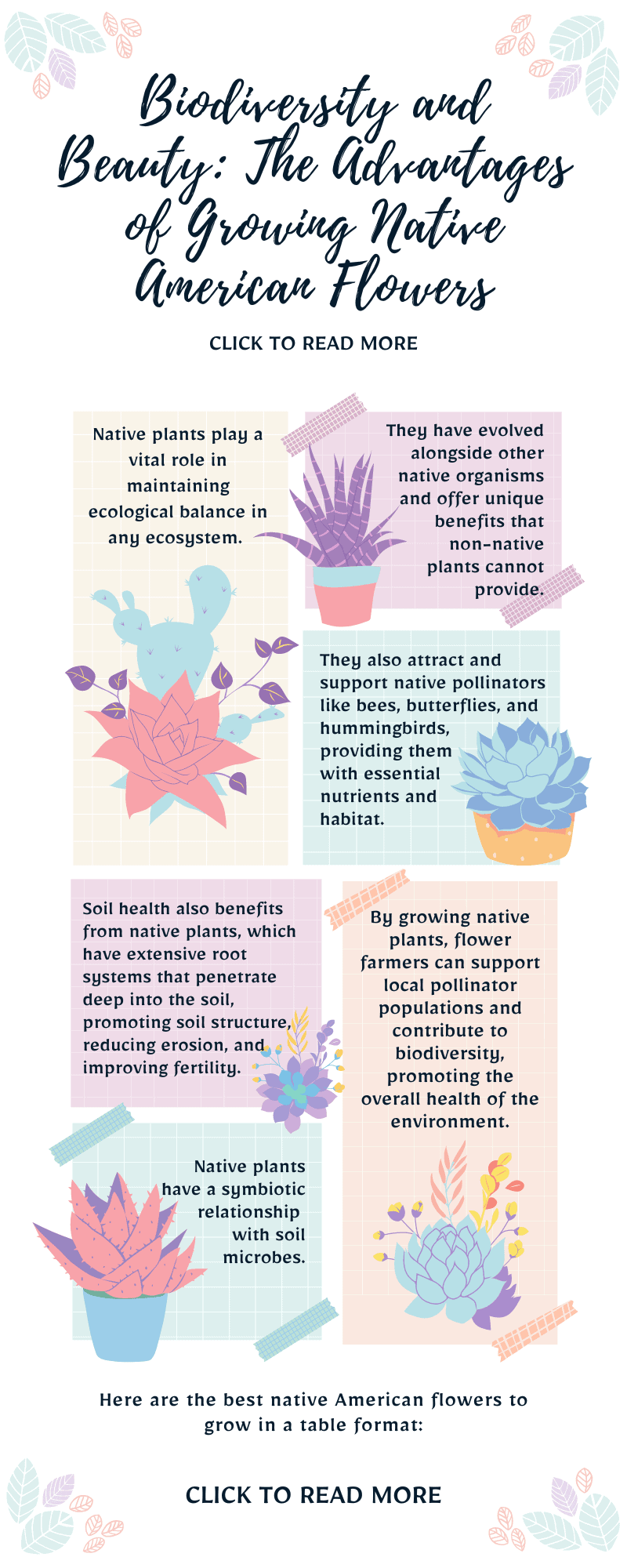
Welcome to this exploration of the benefits of growing flowers native to North America. Native plants play a vital role in maintaining ecological balance in any ecosystem. They have evolved alongside other native organisms and offer unique benefits that non-native plants cannot provide. Let's delve deeper into why flower farmers in North America can benefit significantly from growing flowers native to their region.
From Joe Pye Weed to Virginia Bluebells: The Best Native American Flowers for Your Bouquets
Native plants adapt easily to the local environment, surviving better than non-native plants due to their acclimation to the region's climate, soil, and weather patterns. This reduces the cost and time spent on maintenance since they require fewer fertilizers and pesticides. They also attract and support native pollinators like bees, butterflies, and hummingbirds, providing them with essential nutrients and habitat.
Soil health also benefits from native plants, which have extensive root systems that penetrate deep into the soil, promoting soil structure, reducing erosion, and improving fertility. Native plants have a symbiotic relationship with soil microbes, which promotes beneficial microbial activity and nutrient cycling, leading to a decrease in the need for synthetic fertilizers and soil amendments over time.
For flower farmers with limited time or resources, native plants are ideal as they are generally low-maintenance. Once established, they require little to no watering or fertilization and have a long lifespan, reducing the need for annual replanting. By growing native plants, flower farmers can support local pollinator populations and contribute to biodiversity, promoting the overall health of the environment.
Here are the best native American flowers to grow in a table format:
| Plant Species | Characteristics |
|---|---|
| Joe Pye Weed (Eutrochium spp.) | Tall and statuesque with fluffy pinkish-purple blooms that last for weeks in the field. |
| Black-eyed Susan (Rudbeckia spp.) | Classic and easy-to-grow with cheerful golden-yellow daisy-like blooms. |
| Goldenrod (Solidago spp.) | Late-season bloomer with bright yellow plumes that adds a pop of color to autumn bouquets. |
| New York Ironweed (Vernonia noveboracensis) | Tall and commanding with striking purple blooms that last for weeks in the field. |
| Bee Balm (Monarda spp.) | Prolific bloomer with whorls of brightly colored flowers in shades of pink, red, and lavender. |
| Cardinal Flower (Lobelia cardinalis) | Striking with intense red spikes that are a favorite of hummingbirds. |
| Swamp Milkweed (Asclepias incarnata) | Must-have for any pollinator-friendly garden, with fragrant pink flowers that butterflies adore. |
| Blazing Star (Liatris spp.) | Unique and elegant with long spikes of purple flowers that make a statement in any bouquet. |
| Purple Coneflower (Echinacea purpurea) | Sturdy and easy-to-grow with cheerful pink or purple daisy-like blooms. |
| Cup Plant (Silphium perfoliatum) | Tall and stately with yellow daisy-like flowers that are perfect for adding height and structure to bouquets. |
| Yarrow (Achillea spp.) | Versatile with lacy white, pink, or yellow blooms that are perfect for adding texture and dimension to bouquets. |
| Culver’s Root (Veronicastrum virginicum) | Striking with tall spikes of white or pinkish flowers that last for weeks in the field. |
| Wild Indigo (Baptisia australis) | Slow-growing with tall spikes of blue or purple flowers that are perfect for adding height and drama to bouquets. |
| Blue Flag Iris (Iris versicolor) | Graceful with delicate blue-purple blooms that are perfect for adding a touch of elegance to bouquets. |
| Virginia Bluebells (Mertensia virginica) | Charming with clusters of soft blue flowers that are perfect for adding a touch of whimsy to bouquets. |
Moreover, native plants have cultural significance for many Indigenous communities across North America. Growing native flowers can help preserve cultural traditions and support Indigenous-led agriculture initiatives.
To incorporate these benefits into your flower farm, consider growing some of the best native American flowers, such as the tall and statuesque Joe Pye Weed with fluffy pinkish-purple blooms or the classic and easy-to-grow Black-eyed Susan with cheerful golden-yellow daisy-like blooms. Other great options include the late-season bloomer Goldenrod with bright yellow plumes, the striking purple blooms of New York Ironweed, and the prolific bloomer Bee Balm with whorls of brightly colored flowers in shades of pink, red, and lavender.
5 Reasons to Choose Native Plants for Your Flower Farm
These native plants provide a unique and beautiful addition to any bouquet, adding texture, dimension, height, and drama. Incorporating them into your crop plan can create a more sustainable and resilient growing space while supporting local ecosystems and preserving cultural traditions. Your local wildlife, soil, and customers will thank you for it!
Embed this infographic on your site.

